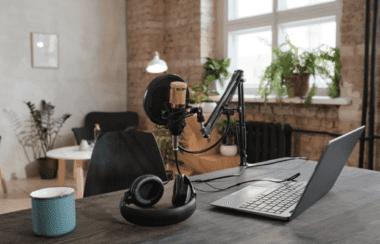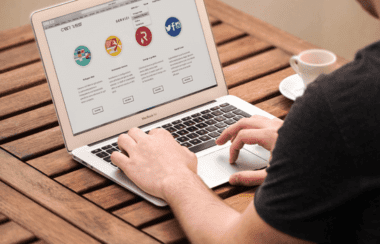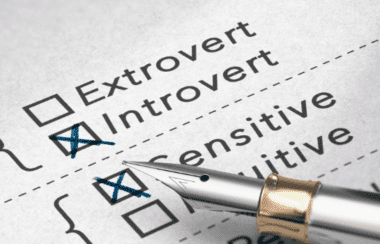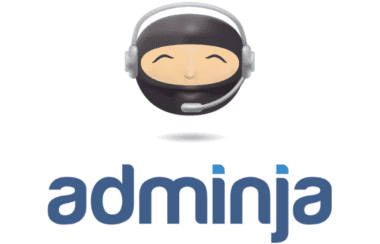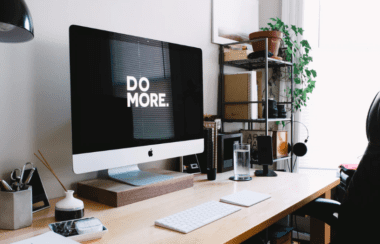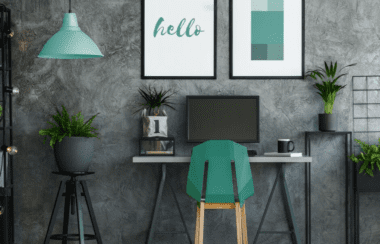Creating the Perfect Freelancer Home Office
By Craig Cannings
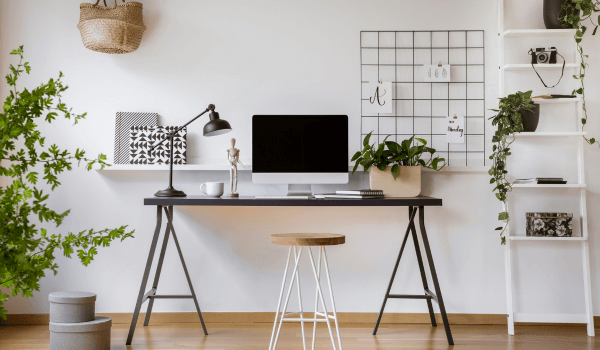
What does an ideal freelancer home office mean to you? Depending on where you’re at in your life and business, it could mean many things.
Over the years, my wife/business partner and I have had many ideal “home offices,” everything from a desk in our unfinished basement to the McDonald’s PlayPlace as our little ones played. Nowadays, our local coffee shop is one of our favorite places to work.
But as time goes on, we’ve also recognized the importance of having a dedicated workspace at home. You need a place where you don’t hear the barista calling customers’ names, and no one’s asking you, “Do you want fries with that?” You need an office to call your own.
In this comprehensive freelancer’s guide, we’ll explore various aspects of designing the perfect freelancer home office to maximize efficiency and comfort.
By the end of it, you’ll be ready to optimize every aspect of your home office experience – from ergonomics to organizing files and communication. So, let’s get started!
Table Of Contents: How to Create Your Ideal Freelancer Office
– 7 Keys to Creating Your Ideal Freelancer Home Office
– 1. Create Boundaries in Your Freelancer Home Office.
– Designating a Specific Room or Area for Work Purposes
– Using Physical Barriers Like Doors, Curtains, or Dividers
– 2. Strengthen Internet Connectivity.
– Comparing Different ISP Plans Suitable for Remote Work
– Setting Up Wi-Fi Extenders or Mesh Networks
– 3. Add Plants to Boost Productivity.
– Choosing Low-Maintenance Indoor Plants
– Strategically Placing Plants Around the Workspace
– 4. Personalize Workspace Style and Decor.
– Decorating Walls with Inspiring Artwork
– Adding Unique Personal Touches
– 5. Invest in Essential Freelance Software and Supplies.
– Exploring Popular Freelance Software Options
– Stocking Up on Office Essentials for Your Workspace Area
– 6. Prioritize Ergonomics and Comfort.
– Selecting an Ergonomic Chair
– Choosing Accessories That Promote Physical Well-being
– Using Natural Light Sources Effectively
– 7. Organize Files and Manage Communication.
– Implementing Effective Filing Systems
– Managing Email Correspondence
7 Keys to Creating Your Ideal Freelancer Home Office
1. Create Boundaries in Your Freelancer Home Office.
Establishing a clear distinction between your personal and professional spaces is essential for maintaining a healthy work-life balance. As you embark on your freelancing career, consider the layout of your entire household when designing your home office to ensure it complements other areas while remaining separate from them.
Designating a Specific Room or Area for Work Purposes
The first step toward creating an effective freelancer home office is designating a specific room or area solely dedicated to your freelance work. This could be anything from converting an unused bedroom into an office, repurposing part of the living room, or even transforming that little nook under the stairs into a cozy workspace. Designating a specific area for work can help you focus better and block out potential distractions that could occur in shared living spaces.
In our Productivity Power course, we also recommend establishing boundaries with others in your home. Let them know that when you’re in this designated space, you need to focus without constant interruptions. Reassure them that when you leave your workspace, they’ll have your full attention.
Using Physical Barriers Like Doors, Curtains, or Dividers
If dedicating an entire room as your home office isn’t feasible due to limited space or budget constraints, consider using physical barriers such as doors, curtains, or dividers to create separation between your personal life and freelance work. For instance:
– Folding screens: These portable partitions can easily be moved around and adjusted according to changing needs throughout the day.
– Curtains: A simple curtain rod with light-blocking fabric can help create privacy without taking up too much floor space — perfect for those working out of small apartments.
– Rope walls: If you’re feeling creative (and perhaps have some extra time on your hands), try constructing a rope wall as an inexpensive and stylish way to divide your workspace from the rest of the home. It creates a division while letting you see what’s going on outside your office.
Regardless of which method you choose, having some form of physical barrier will help reinforce the boundary between work and personal life, allowing you to maintain focus while working remotely.
And above all, remember that your workspace should be treated as a professional environment. Avoid working from the couch or bed and take advantage of the productivity you’ll gain from having your own freelancer home office.
Next, to further optimize your office for remote work, consider strengthening internet connectivity with suitable ISP plans and Wi-Fi extenders or mesh networks.
2. Strengthen Internet Connectivity.
A strong internet connection is crucial for freelancers working remotely. Invest in reliable internet service providers (ISPs) and consider purchasing an extender to strengthen your wireless network coverage throughout the workspace.
Comparing Different ISP Plans Suitable for Remote Work
To ensure a seamless work experience, it’s essential to choose an ISP that offers high-speed internet with minimal downtime. Research various ISPs available in your area and compare their plans based on factors such as speed, reliability, customer support, and pricing. Websites like BroadbandNow can help you find the best options tailored to your needs.
– Speed: Opt for a plan that provides sufficient bandwidth to handle video conferencing, large file transfers, and other data-intensive tasks without any lag or buffering issues.
– Reliability: Look for ISPs with a reputation for consistent connectivity and minimal outages so you can maintain productivity throughout the day.
– Customer Support: Select an ISP known for responsive customer service if any technical issues occur during your freelance work hours.
– Pricing: If you’re budget-conscious, be sure to weigh cost against performance when selecting an appropriate plan; remember that investing in quality now may save time and frustration later.
Setting Up Wi-Fi Extenders or Mesh Networks
If you experience weak signals or dead zones in your home office due to distance from the router or obstacles like walls, consider investing in a Wi-Fi extender or mesh network system. These devices help boost your wireless signal coverage and ensure stable internet connectivity throughout the workspace.
– Wi-Fi Extenders: Also known as range extenders, these devices receive the existing Wi-Fi signal from your router and rebroadcast it to expand coverage. Popular options include the TP-Link RE650 and Netgear EX8000 Nighthawk X6S.
– Mesh Networks: A more advanced solution for larger spaces or multi-story homes, mesh networks consist of multiple nodes that work together to create a seamless Wi-Fi network with consistent speeds across all areas. Some top-rated systems are the Google Nest Wifi and Eero Pro 6.
Incorporating these solutions into your freelancer home office will save you headaches by ensuring you have reliable internet service.
Now, to further boost productivity in your workspace, add some plants strategically around the room.
3. Add Plants to Boost Productivity.
According to a research study, introducing plants into an office environment can increase productivity by 15 percent. By adding them to your office decor, you’ll create a more inviting and calming atmosphere that fosters focus and creativity.
Choosing Low-Maintenance Indoor Plants
Selecting the right type of plant for your freelancer home office is essential to ensure it can thrive without a lot of attention. Some popular low-maintenance indoor plants include:
– Spider Plant (Chlorophytum comosum).
– ZZ Plant (Zamioculcas zamiifolia).
Strategically Placing Plants Around the Workspace
To maximize the benefits of having plants in your workspace, consider their placement carefully. Here are some tips on how to arrange them effectively:
– Place taller plants near windows or other natural light sources, as they will help filter sunlight and reduce glare on your computer screen.
– Position smaller plants on shelves, desks, or window sills to create visual interest and bring life to your work area.
– Consider hanging plants like pothos or spider plant from the ceiling or wall-mounted brackets if you’re short on floor space. This adds a touch of greenery without taking up valuable real estate in your office space.
By incorporating these tips into your freelancer home office, you’ll enjoy the many benefits that come with having indoor plants. Not only will they boost productivity, but they’ll also contribute to making your workspace more visually appealing and inviting — perfect for those long hours spent working remotely.
Next, to further personalize the home office, consider decorating walls with inspiring artwork and adding unique personal touches.
4. Personalize Workspace Style and Decor.
A freelancer home office should reflect your individual preferences while staying within your budget. Some may opt for stylish decor, and others might prefer minimalism — choose what best suits you. By personalizing your workspace, you can create an environment that inspires you to do your best work.
Decorating Walls with Inspiring Artwork
Your surroundings have a significant impact on your mood and motivation levels. So it’s important to decorate the walls of your freelancer home office with artwork that resonates with you personally. Some suggestions are:
– Motivational quotes
– Abstract paintings
– Photographs from your travels.
Websites like Society6 offer affordable art prints by independent artists in various styles so you can find something unique for your space.
Adding Unique Personal Touches
Think of other ways you can accent your space with inspiring, comforting objects. The sky’s the limit!
Tips:
– Add pops of color through accessories like cushions or rugs to brighten up the room.
– Incorporate elements of nature into your decor by using natural materials such as wood or stone accents.
– Create a gallery wall showcasing multiple pieces of art that inspire different aspects of creativity — this could include typography designs, illustrations, or even framed photographs.
Remember that your freelancer home office is a reflection of you and your freelancing career. Take the time to personalize it with inspiring decor that will help you stay motivated, focused, and productive in your work area.
If you’re a graphic designer, for example, you might want to incorporate design elements into your office space. A file cabinet could be painted in your brand colors, or you could use a unique desk lamp that reflects your design style.
As you can see, personalizing workspace style and decor is a fun way to create an inspiring environment. The next step is to invest in essential freelance software and supplies to ensure your success.
5. Invest in Essential Freelance Software and Supplies.
A well-equipped freelancer home office is crucial for maintaining productivity and staying organized. By investing in essential freelance software and supplies, you can streamline your daily tasks while keeping everything within reach. Let’s explore some popular options to help you create a seamless work environment.
Exploring Popular Freelance Software Options
For freelancers, having the correct technology is essential for managing projects, recording time spent on tasks, invoicing customers and communicating with them. Some popular software options include:
– HoneyBook: An all-in-one platform that offers invoicing, project management, time tracking, and more.
– Toggl Track: A simple yet powerful time-tracking tool that helps freelancers stay on top of their billable hours.
– Asana: A robust project management app designed to help teams collaborate effectively on various tasks.
– Slack: A communication platform that streamlines conversations between team members or clients through channels and direct messages.
– QuickBooks Self-Employed: Accounting software tailored specifically for freelancers who need assistance managing finances and taxes efficiently.
Stocking Up on Office Essentials for Your Workspace Area
In addition to reliable freelance software solutions like HoneyBook or Toggl Track, it’s essential to have a well-stocked supply of office essentials. Some items you may need include:
– Pens and pencils.
– Highlighters or markers.
– Notebooks or notepads for jotting down ideas and tasks.
– Sticky notes for reminders or quick notes.
– A stapler, paper clips, and binder clips to keep documents organized.
Investing in the necessary tools and materials for freelancing is an essential step to achieving success. Similarly, prioritizing ergonomics and comfort can help create a space that promotes physical well-being, enabling you to remain productive throughout the day.
6. Prioritize Ergonomics and Comfort.
When designing your freelancer home office, it’s essential to prioritize ergonomics and comfort. By selecting furniture and accessories that promote physical well-being, you’ll enhance productivity while reducing the risk of developing work-related injuries or discomfort.
Selecting an Ergonomic Chair
Comfort is key when it comes to selecting furniture for your home office. Invest in ergonomic pieces such as a chair that supports proper posture to help you avoid musculoskeletal disorders.
An ergonomic chair should provide adjustable features like seat height, armrests, lumbar support and tilt tension to ensure maximum comfort for your body during extended work hours. When shopping for an ergonomic chair, take into account the weight capacity and adjustability options available to find one that meets your specific requirements.
Choosing Accessories That Promote Physical Well-being
– Standing desks: A standing desk, whether adjustable or fixed-height, can help reduce sedentary time during work hours. This type of workspace promotes better posture by encouraging you to stand periodically throughout the day.
– Footrests: If you’re sitting at a traditional desk setup, using a footrest can improve circulation in your legs while promoting proper alignment of your spine when seated.
Laptop stands or monitor risers: In a previous blog post titled “Five Habits to Successfully Freelance From Home,” we recommend elevating your laptop screen or monitor with a dedicated stand or riser that helps maintain eye-level view. This minimizes neck strain caused by constantly looking down at screens placed on flat surfaces.
– Ergonomic keyboards and mice: Invest in peripherals like ergonomic keyboards and mice to minimize strain on your wrists and hands during extended periods of typing or clicking.
– Over-the-ear headphones: Using over-the-ear headphones instead of earbuds can help reduce pressure on the ears, providing a more comfortable listening experience for long work sessions. Noise-canceling capabilities promote concentration in loud settings, allowing you to remain focused on the task at hand.
Using Natural Light Sources Effectively
In addition to purchasing quality equipment, ensure that your home office has access to plenty of natural light from windows or skylights throughout the day. If possible, avoid relying solely on artificial lighting sources like overhead lights or lamps as they may cause eye strain after prolonged use.
Tips:
– Place your desk near windows with ample sunlight exposure for better concentration and mood enhancement.
– Use sheer curtains or blinds if direct sunlight becomes too intense during certain times of the day — this will help diffuse harsh rays without completely blocking out natural light sources.
– Incorporate mirrors into your office design as they can reflect incoming sunlight around the room, making it feel brighter and more spacious even when placed opposite window openings.
Incorporating a good desk and other ergonomic elements into your freelance workspace can have positive effects, not just on comfort but also on productivity and overall health.
Finally, by organizing files and managing communication more effectively, you can streamline your workflow with ease.
7. Organize Files and Manage Communication.
One way to organize your files is by investing in a file cabinet that suits your needs, making it easier to store paperwork and reference materials without creating chaos on your desk.
Implementing Effective Filing Systems
To create an efficient filing system, start by categorizing documents based on their purpose or subject matter. Some common categories include:
– Invoices and receipts
– Client contracts and agreements
– Tax documents
– Project files and drafts
– Promotional materials such as business cards or brochures.
You can further organize these categories using color-coded folders, labels, or dividers within the file cabinet drawers. This will make it easy to locate specific items when needed quickly.
Managing Email Correspondence
Even though emails aren’t physically scattered across your desk, managing them will help maintain a calm atmosphere during focused work periods.
For instance, my wife and business partner, Kelly, provided some valuable advice in a previous blog post titled “Quick Guide to Achieving Inbox Zero.” Here are three tips she recommends when clearing out your email inbox:
– Make a plan for when you need to respond to emails — this allows you to triage them.
– Add emails that require research or follow-up to a task list like Google Tasks or Asana. Another option is to add them to Google Calendar.
– Move emails to an appropriate folder so they don’t take up space in your inbox.
Incorporating these strategies into your daily routine will not only keep your freelancer home office organized but also ensure a more efficient workflow. This allows you to focus on what truly matters – growing your freelance career.
Enjoy Your Ideal Freelancer Home Office!
Designing a functional and comfortable home office space is crucial if you want to maximize your productivity. By selecting suitable indoor plants, investing in a good desk and other ergonomic furniture, and streamlining tasks with freelance software, you can create an environment that promotes creativity and efficiency in your freelance career.
But if you need a change of pace, don’t hesitate to head out to your favorite coffee shop, park, or other inspiring location. That’s the beauty of the freelance lifestyle — the freedom to choose where you want to work!
And remember, building an ideal freelancer home office is just one aspect of managing a successful freelancing career; staying connected with others in the industry is equally important for long-term success.
One way to do this is by joining Freelance University, a full-service freelance community. By participating in small group mastermind sessions and an online community with fellow freelancers, you can network, collaborate, and learn from others who are facing similar challenges. And you can compare notes on your favorite office decor and ergonomic chairs!








